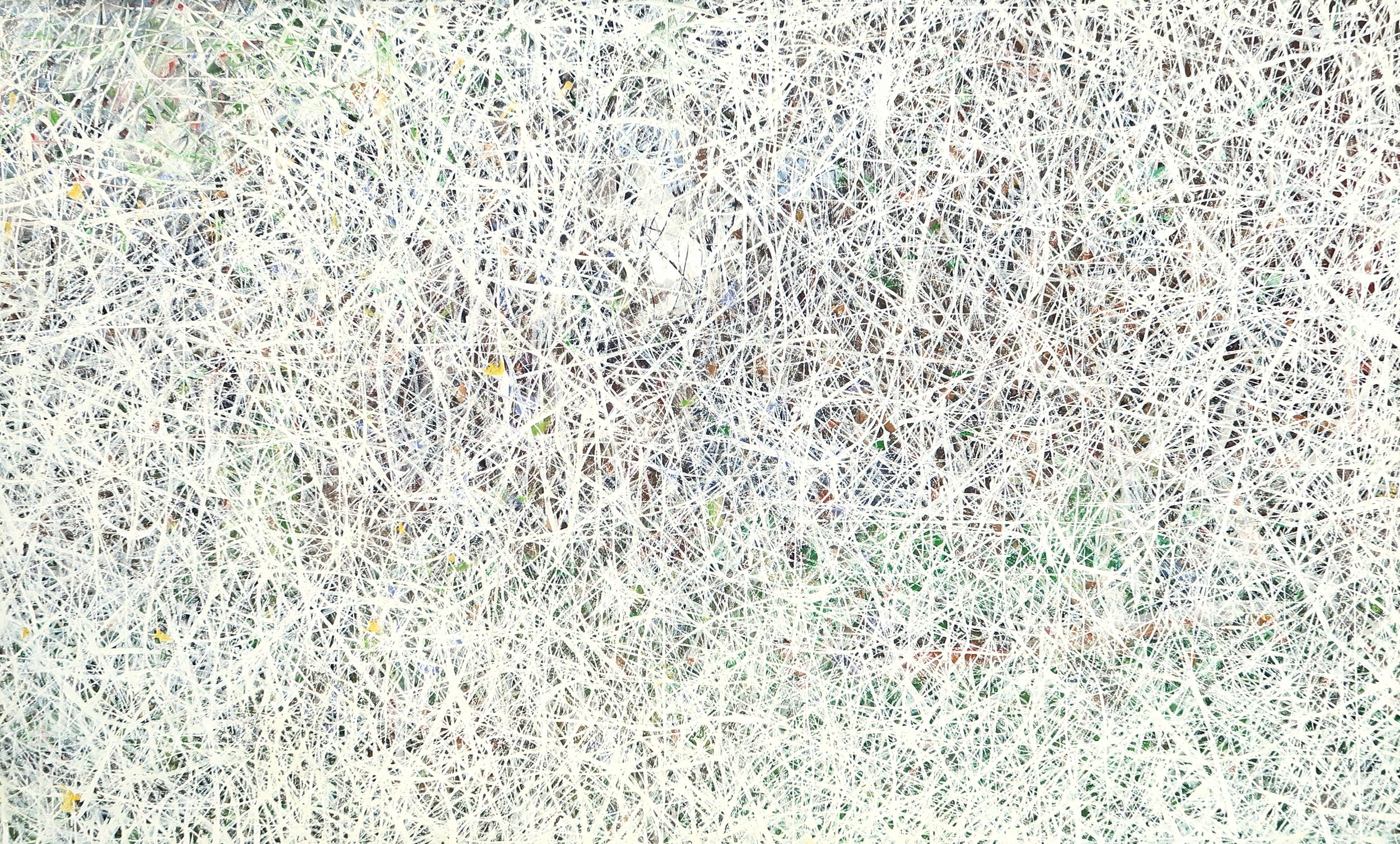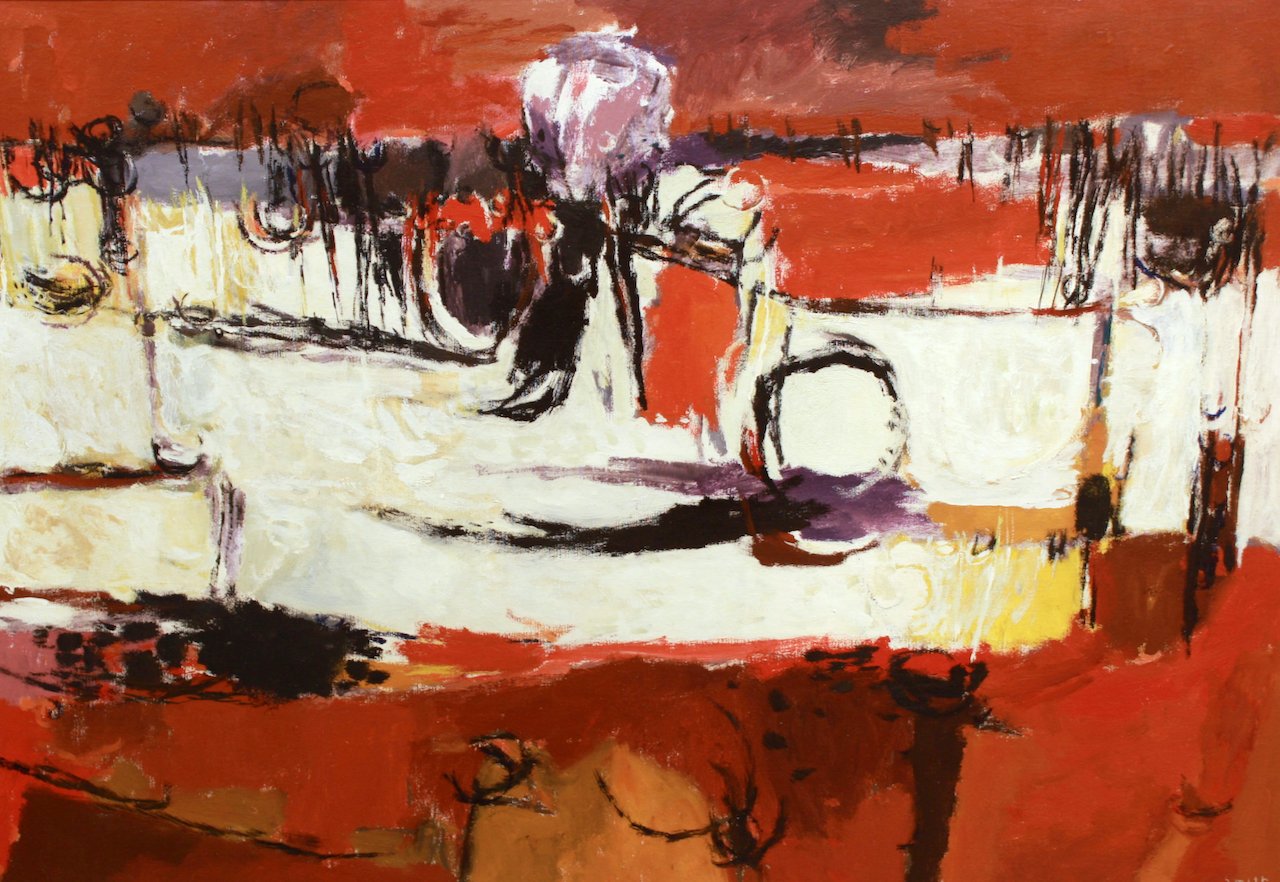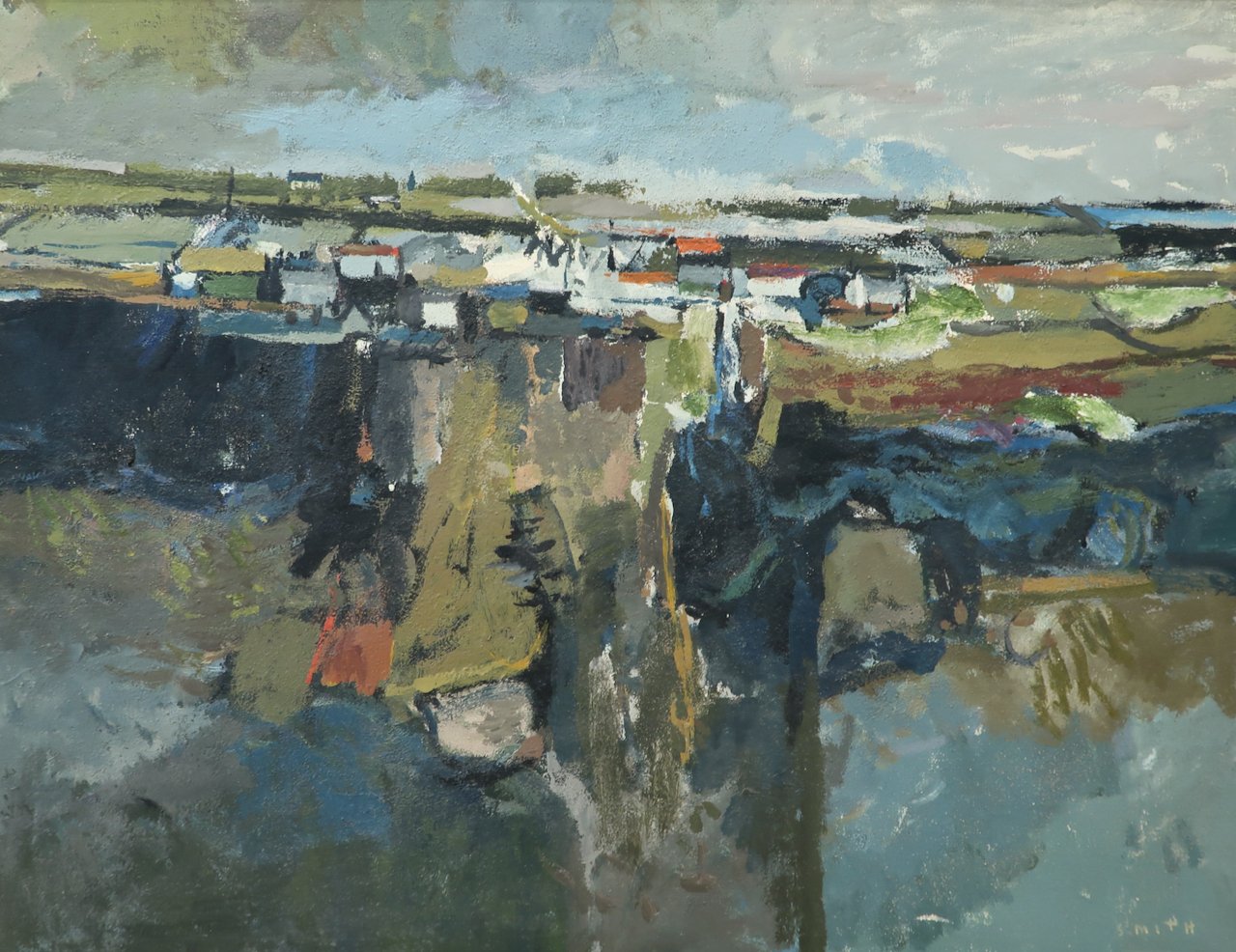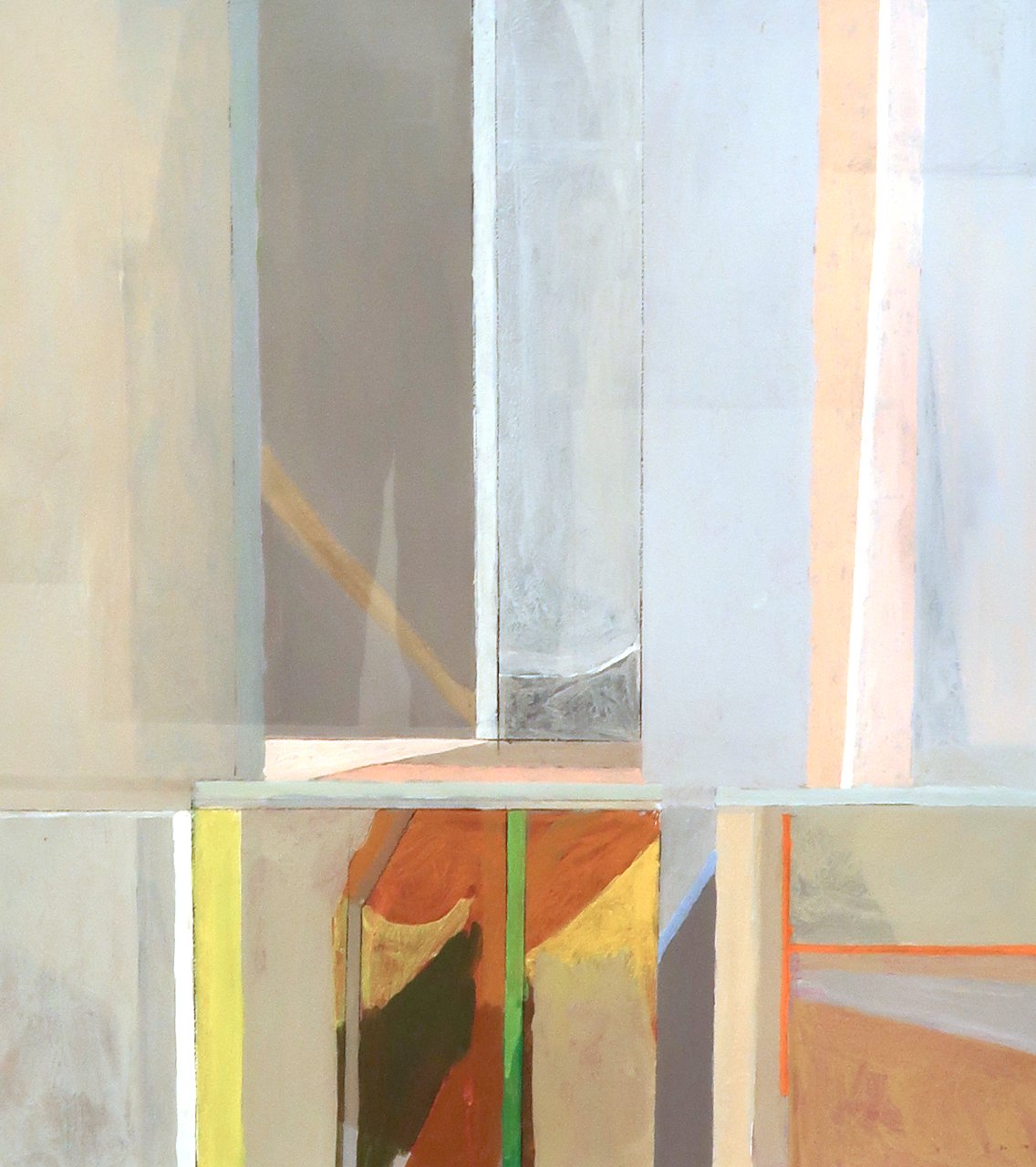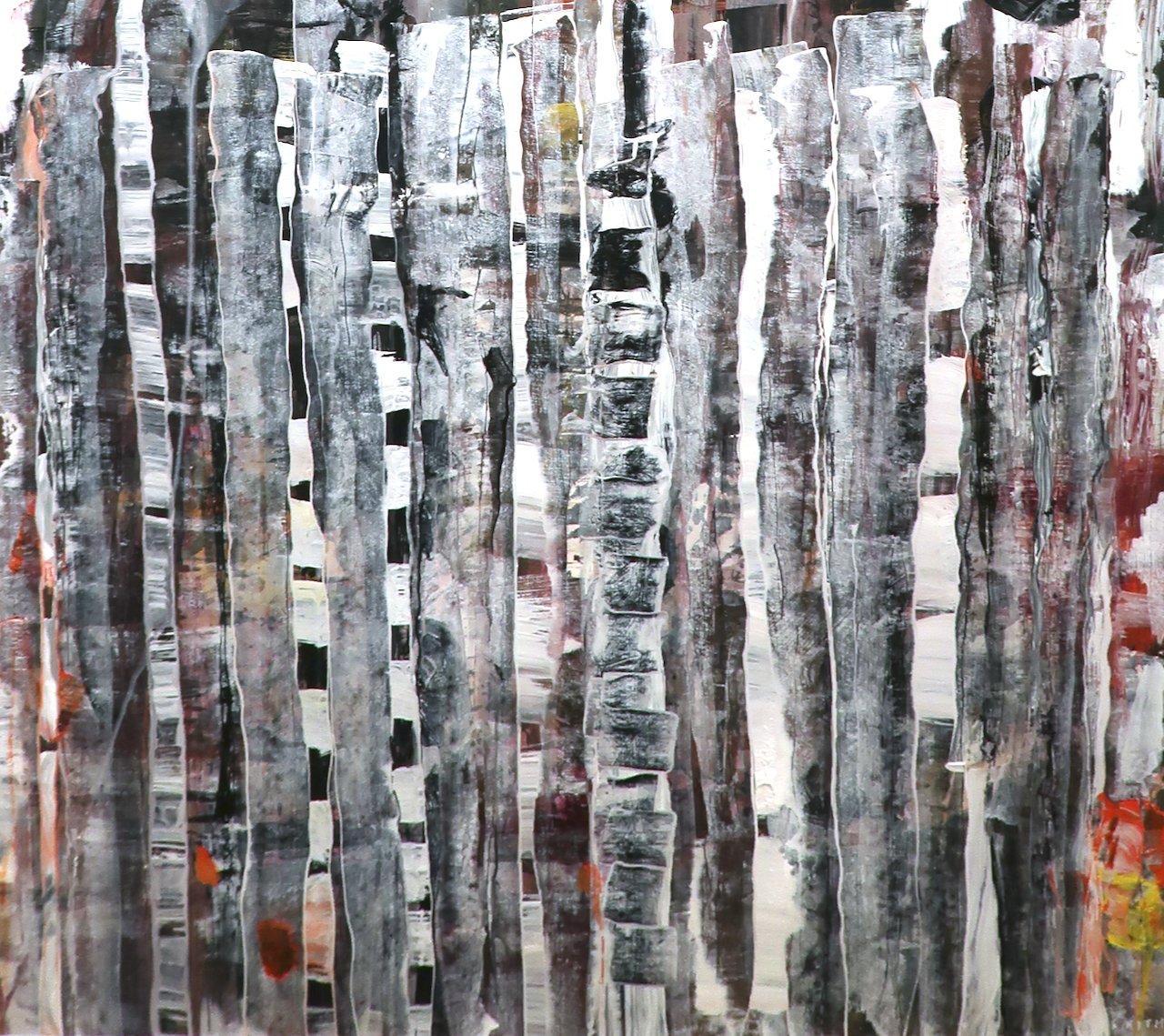Gordon Smith Retrospective
/November 19 - December 2
Opening Reception: November 19, 1-3 P.M.
Madrona Gallery is pleased to present a retrospective on one of British Columbia's most celebrated artists, Gordon Smith.
With a successful career lasting over 7 decades, Smith was an influential figure in promoting contemporary arts in Vancouver. This retrospective will feature work from different periods of his career and look at his changing aesthetic and practice.
Gordon smith - Entanglements - 40.75 x 67 inches - acrylic on canvas - 2013
Smith gained recognition for his work early in his career. This can be seen in his being awarded exhibitions at the Vancouver Art Gallery in the 1940s, as well as his work being selected to represent Canada in the Sao Paulo Biennale in 1960. Throughout his career Smith's reputation and accomplishments continued to grow. He was the recipient of numerous awards including the Governor General's Award in Visual Arts, The Audain Lifetime Achievement award and The Order of Canada. His contributions and impact on the arts in Canada cannot be overstated.
The untitled abstract c. 1960 is a prime example of Smith's early career successes. Works from this series have become iconic as symbols of the first wave of west coast modernism. Gordon Smith along with a number of other artists such as Takao Tanabe, BC Binning, Jack Shadbolt. Toni Onley, and others helped create a distinctly west coast style in the 1950s and early 1960s. This painting, along with much of Smith's work, is rooted in landscape, specifically the intersection of the ocean and mountains. This painting follows a standard “T” composition where the horizontal can be easily read as a horizon. He uses this to anchor the sense of line by mixing the energetic, direct brush work over a ground of atmospheric blending of colour. Throughout Smith's career he constantly negotiated a balance between abstraction and the undeniable influence of coastal landscapes in his work.
The late 1960's and early 1970's show a shift in expression. The paintings of this time are rooted in geometric abstraction. These works are formalist. They move away from splashes of colour and blending of paint on the canvas to highly organized compositions where paint is applied in even and controlled layers. They rely on relationships of colour and questions of perspective achieved through crisp lines rather than gestures of brushwork. Blue Twist is an excellent example of this and was the basis for one of the well known screen prints from this era.
Untitled (1975) shows a transition back into a more painterly style for Smith. This composition perfectly balances the tension of thehard edge work Smith had been focused on for the last decade with looser, more painterly application of paint. This achieves a dialogue between structure and gesture. The pure colour in some of the hard edge elements allows the blending of blue and grey to punctuate the painting and have more impact. Additionally, Smith is going back to using the relationship between the sea, land and sky around his studio as inspiration for subject matter.
Works from the 1980s return to a clear landscape reference. This is seen in the titles of works referencing specific places such as Barkley Sound on Vancouver Island. However, in classic Smith fashion, as much as they lean into traditional landscapes, the manner in which Smith paints them becomes more abstracted.
Ian Thom comments:
"This unity of form, colour and subject is critical to any understanding of these works for they are far from representational. The brushstrokes and colour operate on a more elemental level, and we react viscerally to the shifts of form and mood. The images are richly evocative, suggesting the spiritual and emotional identification with nature..."
p 49 Gordon Smith: The Act of Painting.
In both Rainforest VIII and Barkley Sound, Smith flattens the picture plane so that the shapes of rocks, trees, sky and water take a backseat to the manner in how they are painted. Smith fills these works with emotion through the stark pallet and direct mark making on the canvas. These paintings can be read in parallel to Emily Carr's forest interiors. There is a connectivity between forms that communicate the power of nature in this region.
A key aspect of Smith’s later works is that he is at a stage of his career where there is a combination of a deep knowledge and level of experience in major art movements of the last half of the 20th century. Creekside 1 and Entanglements are masterpieces where Smith is able to allude to various influences that span over 50 years, they exude a confidence that comes with age. It is clear that Smith has the experience to bring these influences together and is at a point in his career where he is free from academic concerns. It allows him to paint for the act of paintings which brings a sense of genuine unrestrained expression.
Creekside 1. - 48 x 64 - Acrylic on canvas - 2013

